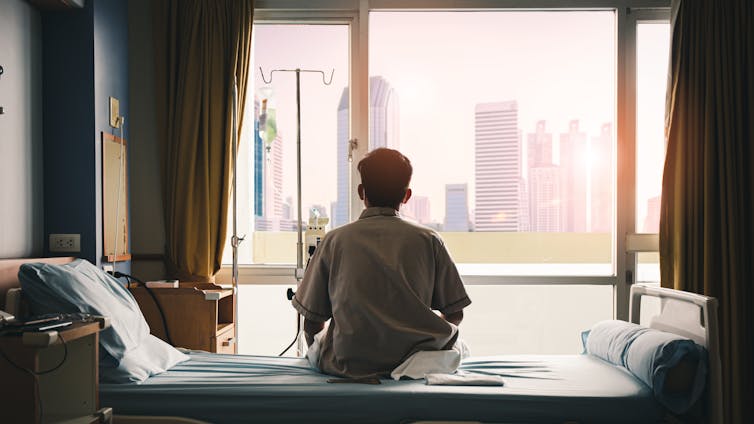
Imagine being questioned about complex technical knowledge in front of your peers, supervisors, and members of the public – knowing that a wrong answer could lead to public ridicule.
This is the reality for many medical students, with up to 90% of medical students experiencing public humiliation during their training.
Our research looked at teaching by humiliation. This is when medical trainees are intentionally shamed or humiliated in front of peers, other health-care staff, and sometimes even patients.
This can create doctors who are anxious, less confident and may be more likely to make errors. Despite that, we found teaching by humiliation remains common in medical training.
What we did and what we found
First, we (Wendy Li and Carolyn Heward) conducted a systematic review looking at what the research says on public humiliation in different settings such as schools, the police force, social media, medical training and so on.
We analysed 33 studies involving more than 40,000 people. We found that, on average, 34.9% of people experience public humiliation. However, we found teaching by public humiliation was astonishingly common in medical education settings.
These concerning findings led to a focused follow-up study, published recently in the journal Medical Science Educator and led by one of us (Luisa Wigg). This study looked specifically at teaching by humiliation in medical education.
This follow-up research analysed 28 published studies involving nearly 35,000 medical trainees across multiple countries.
The results showed that, on average, 57% of medical students and junior doctors reported that they experienced teaching by humiliation, although there were large differences between various medical schools and health-care settings.
Astonishingly, one US study revealed that 90.8% of graduating medical students experienced teaching by humiliation at some point during their training.
Surveys from the Association of American Medical Colleges have also shown public humiliation is consistently reported as the most common form of mistreatment experienced by medical students.
What teaching by humiliation looks like
Teaching by humiliation typically happens when an educator embarrasses a trainee in public teaching spaces such as hospital wards, operating rooms, or medical conferences.
Some common examples are:
- when students are aggressively questioned about medical knowledge
- when wrong answers are mocked
- when people make derogatory comments about a student’s capabilities in front of others.
These incidents most commonly occur in operating theatres and during hospital rounds (when doctors visit patients, often in the mornings).
Senior doctors are often the ones who teach by humiliation. However, the research showed a concerning pattern where nurses, fellow students and even junior doctors also do it.
This suggests people who experience humiliation might later perpetrate it themselves, because they view it as a normal part of medical culture.

How does this affect patient care?
For patients, the implications of this practice are concerning.
Most people want any doctor treating them to be knowledgeable but also confident and emotionally stable.
The research has shown doctors who have experienced teaching by humiliation often develop mental health problems. One study showed they were almost eight times more likely to report burnout and almost four times more likely to report symptoms of anxiety and depression.
Many doctors become reluctant to ask questions or seek help when they are uncertain about something.
This is exactly the opposite of what most patients want in a medical professional making crucial decisions about their care.
The research also showed medical trainees who experience humiliation often become isolated from their peers and disengaged from learning.
Some end up leaving medicine altogether, which contributes to shortages in the health-care workforce.
Those who remain in medicine might perpetuate the cycle, because they have internalised the belief humiliation is a normal part of medical education.

A deeply hierarchical culture
The medical profession has a deeply hierarchical structure. Senior doctors hold significant power over the education and future careers of their trainees. This hierarchical culture may contribute to the problem of teaching by humiliation.
Many educators simply want to maintain high standards through rigorous questioning. The research shows, however, that this can all-too-easily cross the line into harmful humiliation.
Some argue teaching by humiliation prepares doctors for high-pressure situations or helps maintain professional standards.
The evidence, however, shows it achieves the opposite effect. It creates doctors who are anxious and less confident, who might be more likely to make errors and less likely to work effectively with their colleagues.
For change to occur, medical schools and hospitals need to acknowledge this problem exists and implement clear policies to prevent teaching by humiliation.
This doesn’t mean lowering standards. Instead, it means finding better ways to maintain excellence while supporting the wellbeing of trainees.
Alternative teaching methods – such as structured feedback sessions, simulation-based training, and constructive mentorship programs – can help maintain high standards.
The way doctors are trained affects how they will treat their patients.
With the health-care system under pressure and workforce shortages common, we cannot afford to damage medical staff through outdated and harmful teaching practices.
Patients have the right to be treated by health-care professionals who have received their training in supportive, psychologically safe environments.![]()
Carolyn Heward, Lecturer, Clinical Psychology, James Cook University; Luisa Wigg, Casual Academic in the College of Medicine and Dentistry, James Cook University, and Wendy Li, Associate Professor of Psychology, James Cook University
This article is republished from The Conversation under a Creative Commons license. Read the original article.

